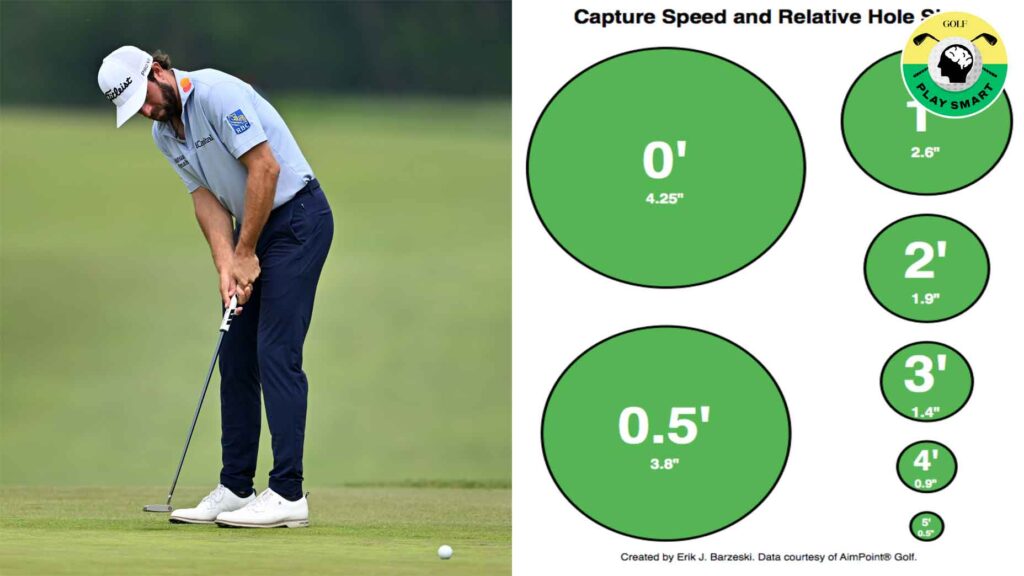Mastering the Art of Putting: Speed and Effective Hole Size
By: Zephyr Melton | Published: June 6, 2025
Golf enthusiasts and professionals alike understand the crucial role that putting plays in achieving lower scores. The ability to hole putts consistently depends primarily on two key factors: line and speed. While mastering the line often garners more focus, the significance of speed cannot be overstated. In fact, if either element is slightly off, even the most experienced golfers can find their ball missing the cup. To deliver exceptional putting skills, you need to strike the right balance between these two elements, making putting one of the most intriguing yet challenging aspects of golf.
Understanding the Importance of Speed in Putting
Speed is a fundamental determinant of whether a putt rolls into the hole or veers off-course. Different putting philosophies suggest various techniques when it comes to applying speed. Some golfers advocate for hitting every putt firmly, ensuring that the ball rolls about a foot past the hole, while others prefer a softer approach. This discrepancy in opinions reflects individual styles and strategies, which can significantly affect putting performance. Nevertheless, one conclusion rings universally true: speed remains an indispensable component of effective putting.
Effective Hole Size: What Every Golfer Should Know
An often-overlooked consideration in the speed equation is the concept of effective hole size—how the speed of your putt influences the size of the hole. When you hit a putt rapidly, the effective size of the hole diminishes, increasing the likelihood of lipping out. Frustrating as it may be, research has shown that a putt that travels slower has a far better chance of dropping in, with minimal risk of missing entirely. Understanding this relationship can significantly improve your putting strategy, leading to a more successful game.
Visualizing the Concept: The Impact of Speed on Hole Size
While browsing social media, I stumbled upon an insightful chart that reveals the shrinking effective hole size in relation to putt speed. This compelling visual was shared by Erik J. Barzeski, co-author of Lowest Score Wins, helping to illustrate the critical relationship between speed and successful putting. According to the chart, as your putts increase in speed, the relative size of the hole appears to shrink, thus decreasing your chances of sinking the putt.
The Calculations: How Speed Affects Effective Hole Size
In Barzeski’s chart, we see how putts of varying speeds influence the effective size of the hole. A putt that reaches the hole at "dying speed" can utilize the entire 4.25-inch diameter of the cup, giving you the best chance of making the shot. Conversely, putting with too much pace diminishes this effective size. For example, putts that roll one foot past the hole reduce the effective hole size to just 2.6 inches, while those rolling two feet past shrink it to 1.9 inches. Remarkably, if a putt travels five feet past the hole, the effective hole size is reduced to a mere half inch—an alarming statistic for any golfer aiming for precision.
Reassessing Your Strategy: Go Easy on the Speed
For those who believe in the mantra of “taking the break out of the putt,” it’s time to reconsider your approach. Hitting putts with excessive speed may seem like a smart tactic for overcoming slopes and breaks; however, this strategy often comes at the cost of miss shots. Instead, embracing a softer, more calculated approach can enhance your effectiveness on the green. As demonstrated in the chart, golfing with less force increases the odds of utilizing the entirety of the hole’s size, thereby improving your chances of sinking putts.
Techniques to Perfect Your Speed Control
Practicing speed control can make a notable difference in your putting game. Begin by recognizing the importance of feel and rhythm in your stroke. Start with shorter putts, focusing on the clock-driven rhythm of your swing. Gradually progress to longer distances, ensuring that you maintain consistent pacing throughout your stroke. Additionally, assessing greens and understanding their slope can provide invaluable clues for mastering speed.
Incorporating Effective Hole Size Awareness
Awareness of effective hole size should become second nature as you adhere to the nuances of your putting strategy. When facing a crucial putt, take a moment to evaluate both the line and speed. Gauge the condition of your surroundings and determine whether a softer approach might yield better results. The combination of this awareness and practiced technique offers a winning formula for confident putting.
Conclusion: The Path to Putting Success
As you navigate your journey to improve your putting game, always keep in mind the intertwined relationship between speed and effective hole size. Strategies may differ, but the goal remains constant: to become a more precise and confident golfer. By honing your skills, understanding the critical dynamics of speed, and respecting the intricacies of effective hole size, you can significantly boost your chances of sinking those tricky putts. It’s time to embrace a smarter, more effective putting game—one that leads you to lower scores and greater enjoyment on the golf course.
By practicing these insightful techniques, you will not only enrich your understanding of golf mechanics but also elevate your performance to new heights. As you engage in the beautiful game of golf, remember that those who master the art of putting often emerge victorious. So, step up to the green armed with this knowledge and get ready to ditch the three-putts for good.


